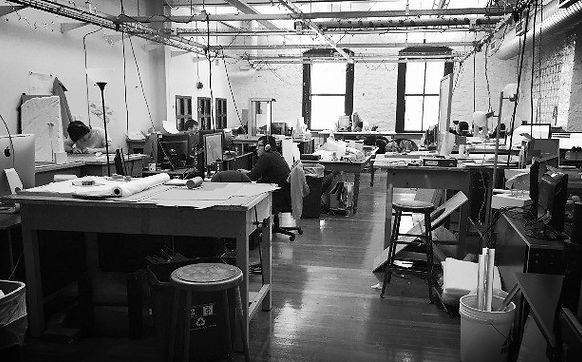Having Your Own Place in Space // Josh Rigali
4/22/2015
As Designers we have a tendency to design large open spaces to create large and social gathering spaces. There has been a recent push within the academic world and business world for increased collaboration to increase creativity and production. The question is, is collaboration always the best solution? Is it ever the best solution? While I believe collaboration can help create ideas and produce through “cross pollination” of ideas, it is crucial for humans to be able to work in solitude.
Instead of focusing on large collaboration spaces the focus should switch to designed options. The option to work alone or within a group. If spaces can be designed in such a way that students or professionals can intermingle with each other as they walk about the classroom or office to and from their own personal space they will be able to communicate with each other and bounce ideas off of each other. Then when they want to get to work they can nestle up in their space and get into the zone.

In the College of Architecture Planning and Design at Kansas State University there is a strong desire for defensible space. Space that students can call their own and lay claim to. They first day the studios open up each semester it is often a mad rush to the studios to lay claim to a plot of land. The corners are the first spaces to be declared followed by the walls. Any latecomers are stuck in the middle of the studio. Soon after the initial blitz there is a power struggle for space. Borders are pushed and pulled to gain more real estate. By the end of it all it looks as though the building has been taken over by squatters, but that is how it has always been done and how the students are comfortable. The studio is a very social environment, yet when it is final production week students put on their noise cancelling head phones slump down in their chairs and put their hoods up to completely shut out the outside world. This insures total focus on the task at hand and dramatically increases productivity.

That being said one of the best ways for students in the college to learn is from each other. This happens through asking questions, giving critiques, and sharing new discoveries. Throughout a project the entire studio will often get together to look at each students projects. These frequent critiques help spread ideas and teach lessons that would otherwise never come up. So in this aspect the projects produced would not be anywhere near as successful had collaboration not been involved, however if students were not able to isolate themselves there would be nothing produced to share. Just ideas floating about in their head.
Constant collaboration also allows certain students and employees to hide their short comings behind the group’s success. When working within a group it is inevitable that while some members take charge and generate outstanding work others just jump on for the ride and the credit. Spreading the work load and segregating at times insures that equal work is being accomplished, or shows who is slacking.
We as designers love the idea of an “open concept” and transparency throughout. We love to create sight lines and display every activity that may occur. We love to say our designs will bring people together and increase social activity but, perhaps the emphasis need not be on total openness and connectivity, but on precise implementations of seclusion and team work that can function together. There must be an option for both ways of working to insure everyone can find their niche.
Written by Josh Rigali
